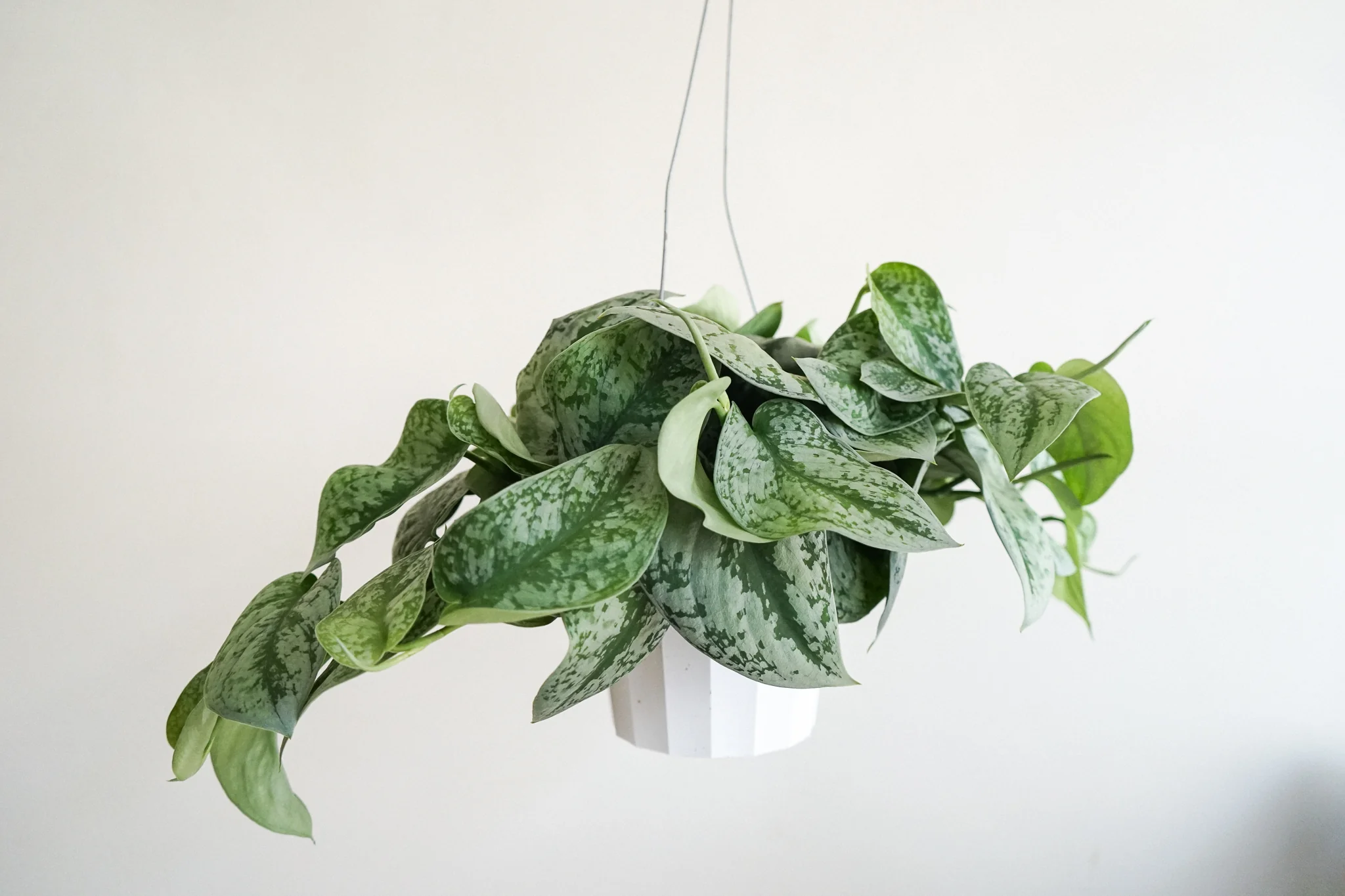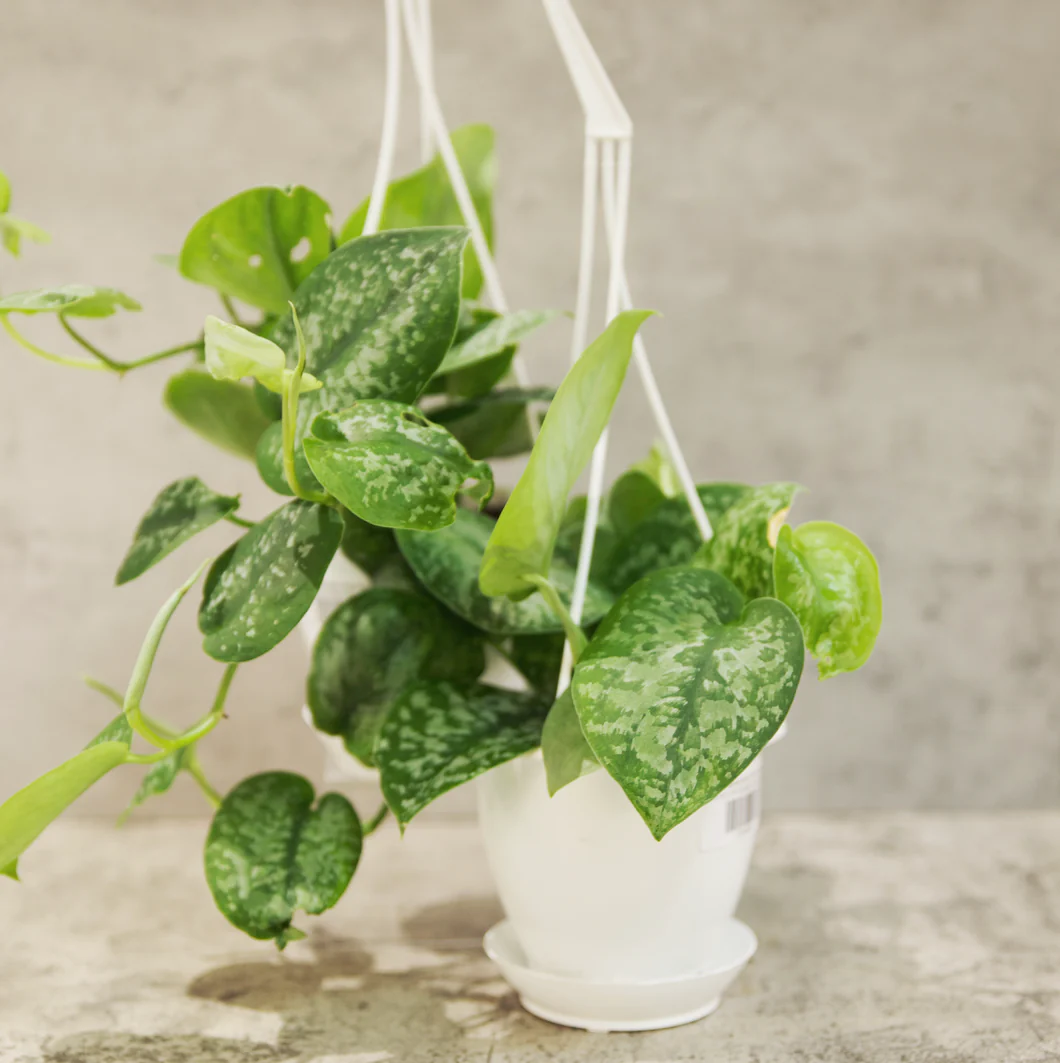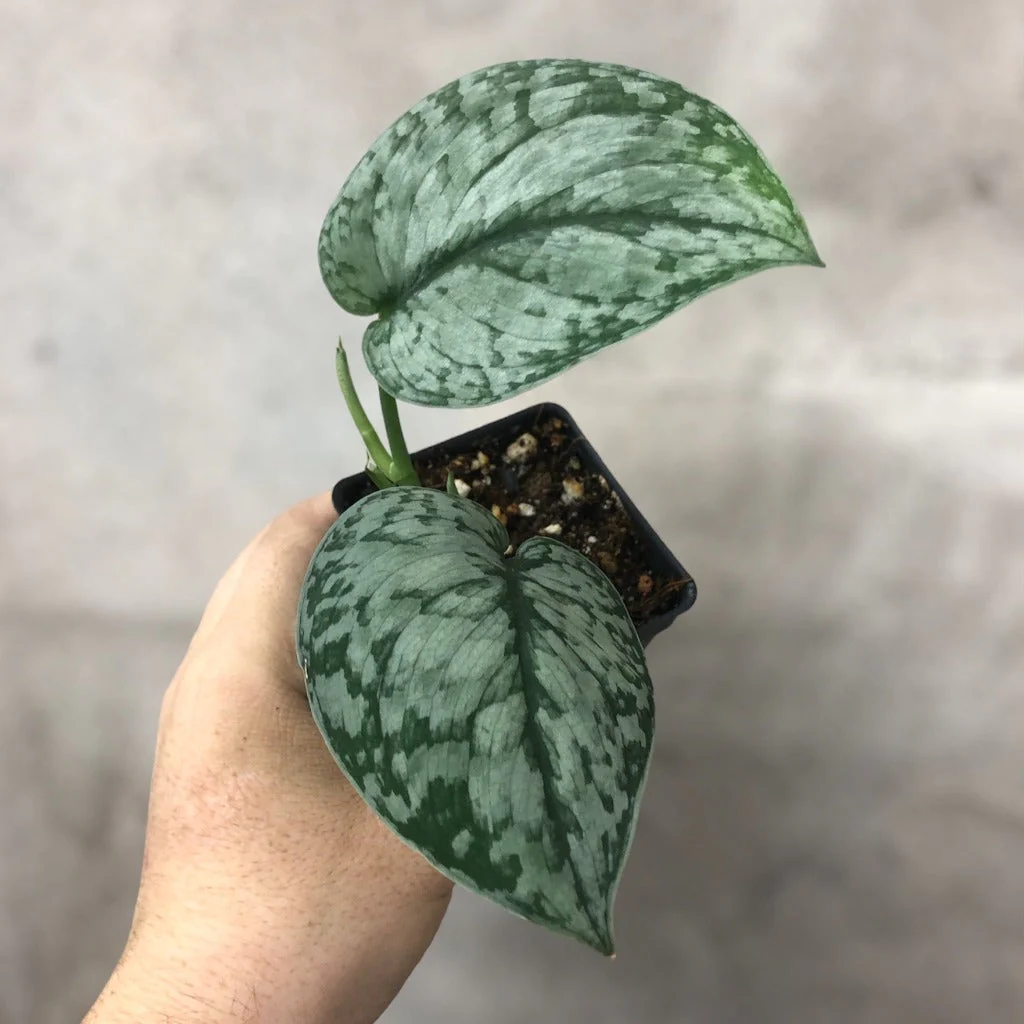The Scindapsus Pictus Silver Splash, also known as the Satin Pothos or Silver Vine, is a gorgeous houseplant known for its silvery-green foliage. As its name suggests, each leaf is splashed with patches of silver that make the plant shimmer when light hits it.
Beyond just being beautiful to look at, the Scindapsus Pictus Silver Splash also has some fascinating features that any houseplant enthusiast will love learning about. Here are 5 fascinating facts about this gorgeous vine.

Fact 1: Its Leaves Can Grow Quite Large
The Scindapsus Pictus Silver Splash has leaves that can grow up to 10 inches long. That makes them significantly larger than the leaves found on many other pothos varieties.
Why the Leaves Grow So Large
The Silver Splash enjoys bright, indirect light which helps its leaves expand to their full size potential. The more light it receives, the bigger its leaves can grow. Its silver patches also have more room to spread out across the dark green background.
Caring for the Large Leaves
The large leaves require some special care. provide a moss pole or trellis for the vine to climb on. This takes pressure off the heavy leaves and prevents breakage. Mist the leaves occasionally since dust tends to collect on the broad surface area. Wipe them down with a damp cloth to keep them looking their best.
For more on optimal lighting conditions, see “How to Grow Scindapsus in 5 Easy Steps“.
Fact 2: It’s Actually a Type of Pothos
Although it’s commonly called Satin Pothos, Silver Splash is scientifically categorized as a Scindapsus pictus. However, it is closely related to Epipremnum pothos and the two are often confused.
How Scindapsus Differs From Epipremnum
While they look similar, there are a few key differences. Scindapsus have shinier, thicker leaves and are generally more tolerant of lower light levels. They also cannot grow nearly as long as rapidly trailing Epipremnum pothos. Their growth differs too – Scindapsus leaves emerge singly while Epipremnums grow in pairs.
Shared Family Traits
That said, Silver Splash does share the basic care needs of its pothos cousins. They enjoy bright filtered light, well-drained soil, average home temperatures, and occasional trimming. Maintain the same care strategies used for heartier pothos varieties and Silver Splash will thrive!
- Learn more about their differences in “Scindapsus Varieties: Choose the Perfect Plant“.

“Unleash the beauty of nature in your home with the Scindapsus Pictus Silver Splash! Click here to add this stunning plant to your collection today!”
Fact 3: Its Coloring Lights Up Rooms
One of Silver Splash’s most obvious — and beautiful — qualities is the unique variegations splashed across its foliage. The green background hosting silver splotches makes it stand out in any space.
Why It Has Such Lovely Coloring
The splashy patterns occur due to a lack of chlorophyll in sections of the leaves. Without green chlorophyll present, those spaces can’t absorb light. They take on a silvery appearance from how the light reflects instead. This color variation simply comes from Silver Splash’s genetics.
Decorating With This Gorgeous Plant
Silver Splash’s eye catching leaves let it shine as a lovely living decoration. Its gleaming colors enliven darker corners or display beautifully against colorful backdrops. Group a few Silver Splash potted plants to make a stunning centerpiece. Use a moss pole to encourage climbing and show off gorgeous cascades of foliage spilling downward.
Fact 4: It’s Extremely Easy to Care For
This dazzling houseplant has another perk beyond its display qualities — it’s very easy to keep happy and healthy in average home conditions. That makes it a great option even for beginner plant parents.
Basic Needs Are Minimal
Silver Splash is content getting medium light with some morning or late day sun exposure. Water about once a week whenever the top inch of soil becomes dry. Use regular liquid houseplant fertilizer diluted to half strength a couple times during spring and summer. Provide a trellis or thin stake for support if desired. Otherwise, its needs are simple!
Troubleshooting Problems
Should any problems crop up, they’re easy to address. Yellow leaves usually indicate overwatering so cut back to let soil dry out further between drinks. Wilting or limp foliage means it’s thirsty and needs more frequent watering. Just keep an eye out to ensure proper moisture levels are being met!

Fact 5: Propagation is Simple
One last excellent quality of Silver Splash is that producing babies from a parent plant is extremely simple using stem cuttings. Its easy propagation means plant parents can share genetic clones with friends or fill whole rooms with this stunner.
Propagation Steps
Follow these simple propagation steps: Take 4-6 inch stem tip cuttings in spring and dip the ends in rooting hormone. Place in perlite or water to root. New roots emerge in about 4-6 weeks. Pot up the new babies in small containers using houseplant soil. Keep freshly rooted plants carefully watered as they adjust. Then enjoy the identical new additions!
Why It Takes so Well to Propagation
Silver Splash readily generates roots along its stem nodes whenever provided warmth, high humidity, and bright overhead light. Since cuttings cloned from a parent plant are genetically identical, the babies will showcase those same unique silver splash patterns making propagation extremely rewarding!
For a detailed guide on propagation techniques, refer to “Scindapsus Breeding Technique in 5 Simple Steps“.
Conclusion
The gorgeous Scindapsus Pictus Silver Splash certainly deserves a spot among the most fascinating houseplants available. Its huge satiny leaves literally brighten any room while its durability, easy propagation, and minimal care needs make it an ideal choice even for novice plant parents. Try adding one of these beauties to your home and enjoy watching its wonderful splashed patterns shine!
FAQ
- What is Scindapsus Pictus Silver Splash?
- Answer: Scindapsus Pictus Silver Splash is a popular houseplant known for its heart-shaped green leaves with unique silver splashes or splotches. It’s a variety of Scindapsus Pictus, often admired for its ornamental value and ease of care.
- How do I care for my Scindapsus Pictus Silver Splash?
- Answer: This plant prefers bright, indirect light and should be watered when the top inch of soil feels dry. It’s best to avoid overwatering, as this can lead to root rot. The plant thrives in a well-draining potting mix and benefits from occasional misting or humidity.
- Can Scindapsus Pictus Silver Splash grow in low light?
- Answer: While it can tolerate low light conditions, the Scindapsus Pictus Silver Splash will show more vibrant silver variegation when placed in bright, indirect light. In low light, the growth may slow down, and the leaves might lose some of their distinctive splashes.
- Is Scindapsus Pictus Silver Splash toxic to pets?
- Answer: Yes, the Scindapsus Pictus Silver Splash, like other Scindapsus varieties, is toxic to cats and dogs if ingested. The plant contains calcium oxalate crystals, which can cause oral irritation, vomiting, and difficulty swallowing in pets.
- How fast does Scindapsus Pictus Silver Splash grow?
- Answer: The growth rate of Scindapsus Pictus Silver Splash is moderate. With optimal care, it can grow relatively quickly, especially in the growing season (spring and summer). Regular pruning can encourage fuller, bushier growth.

